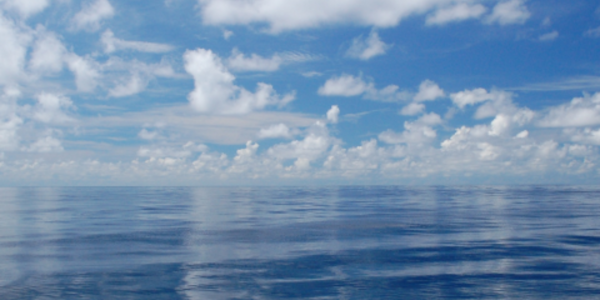Ecosystems Indicators Give Insight

NOAA has released its 2022 update of the National Marine Ecosystem Status website, which provides easy access to NOAA’s wide range of important coastal and marine ecosystem data.
The website provides a holistic view of important ecosystem data and has been newly expanded to the Great Lakes in 2022. New indicators such as the number of days an ecosystem experiences a marine heatwave and changes in the distribution of species have also been added.
Marine heatwaves
Marine heatwaves have been increasing in frequency and intensity in U.S. waters. When ocean temperatures are exceptionally high in a specific area for an extended period of time, it has the potential to affect the biology and chemistry of an ecosystem. These events are known as marine heatwaves.
The new marine heatwaves indicator displays information about heatwave intensity for a given year. The data that goes into the indicator comes from the National Centers for Environmental Information’s Optimum Interpolation Sea Surface Temperature product. Additional heatwave information can be found at the NOAA Physical Science Laboratory website.
Understanding the duration, intensity, and spatial coverage of marine heatwaves is important to coastal communities as increased incidence of intense heatwave events may affect the area available for fishing, recreational, or cultural practices and the overall condition of a local ecosystem. For example, increased incidence of heatwaves might cause important species in the food chain to migrate to areas where these disturbances are less common.
Introducing Great Lakes Indicators
For the first time, the National Marine Ecosystem Status website includes indicators for each of the Great Lakes as well as the Great Lakes Region as a whole. Each lake has distinctive basin features, circulation, and ecology, but all of the Lakes are socially, economically, and environmentally significant to the region, the nation, and the planet.
In total, 13 ecosystem indicators are available for the Great Lakes, including lake ice cover and coastal population. The indicators show that the Great Lakes ecosystems are stable with the exception of increasing intensity of marine heatwaves, frequency of billion-dollar disasters, and value of the coastal tourism sector.
The indicators were developed in partnership with the Great Lakes Environmental Research Laboratory, and the data used on the website comes from a collection of NOAA, state-level, and international resources.
Shifting Species Distribution
Changing climate and ocean conditions are affecting shifts in distributions of many marine species as they attempt to remain within their preferred environmental conditions. Understanding how species are distributed in space and time is a central question in ecology and important for species conservation and management.
The marine species distribution indicator shows changes in average species latitude and depth by region. Status and trends vary by region, but species are generally moving north in areas experiencing rapid warming (e.g., Northeast U.S. and Alaska/East Bering Sea).
Data for this indicator comes from NOAA Fisheries’ new DisMAP tool. The tool consolidates data on species distributions into one user-friendly and interactive website and provides tools for exploring changes in marine fish and invertebrate distributions through time.
NOAA’s Ecosystem-Based Approach to Monitoring Change
As a science agency, NOAA continues to make progress in advancing its ecosystem science and management enterprise. We monitor and analyze the widest range of U.S. coastal and marine ecosystem data. This website is designed to help users track and monitor the overall status of U.S. marine ecosystems while consolidating links to data and resources from across NOAA (and our partners) for those interested in a deeper dive. Biological, physio-chemical, climate, and human dimensions indicators are included for each region in this ecosystem status portal because the factors from each of these categories are interconnected, potentially affecting one another as well as the overall status of the ecosystems.
This approach is known as an “ecosystem-based” approach—this philosophy differs from single-variable or single-species approaches to monitoring and management by considering a suite of variables to inform important decisions about resource management or ecosystem conditions rather than one or two isolated indicators. The data hosted on this site are a good example of the types of information that could be used to support Ecosystem-Based Management.



